![[Univ of Cambridge]](http://www.eng.cam.ac.uk/images/house_style/uniban-s.gif)

![[Dept of Engineering]](http://www.eng.cam.ac.uk/images/house_style/engban-s.gif)

![[DSL]](http://www-civ.eng.cam.ac.uk/dsl/dslsmallest.gif)
Nonlinear Vibration of Deployable Booms
Deployable Booms
Deployable booms are an important spacecraft component. The Ulysses spacecraft (launched in 1990) uses specific
types of deployable boom for different purposes: Bi-STEM used as a dipole antenna (35m length, 5mm diameter); CTM used as a monopole antenna (8m length, 40mm width); radial boom for dispensing sensors (5.5m length, 50mm diameter). Deployable booms are also used for gravity gradient stabilization and as actuators to deploy and retract other structures, e.g. the solar arrays of the Hubble Space Telescope. The STEM and CTM are formed from thin sheet metal. They are initially stored on a drum and are deployed, once in orbit, to their working configuration by an electric motor housed in a mechanism box.
| Ulysses Spacecraft |
STEM-type deployable booms |
Collapsible Tube Mast (CTM) |
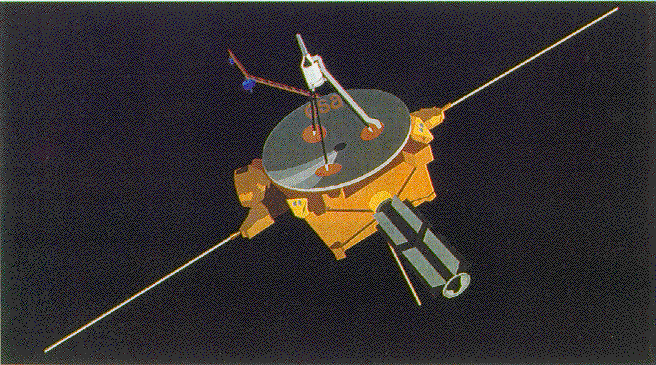 |
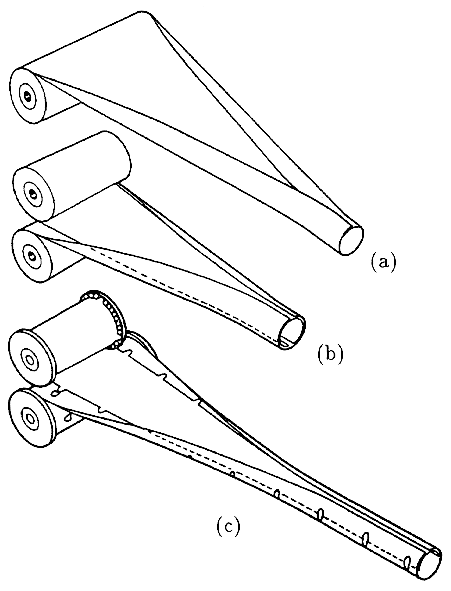 |
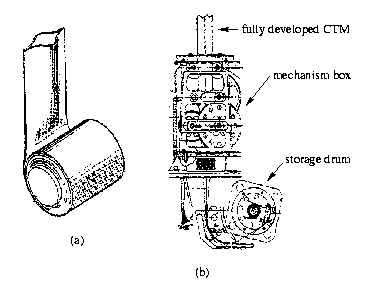 |
Finite-Element Analysis of First and Second Modes
The first two eigenmodes of a cantilevered rib.
| First mode (1st Torsional) |
Second mode (1st Flexural) |
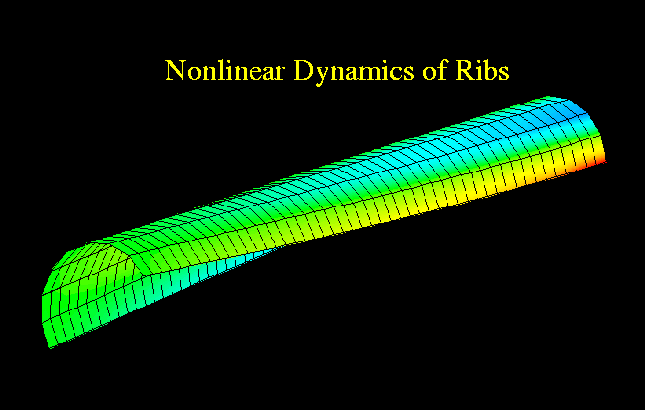 |
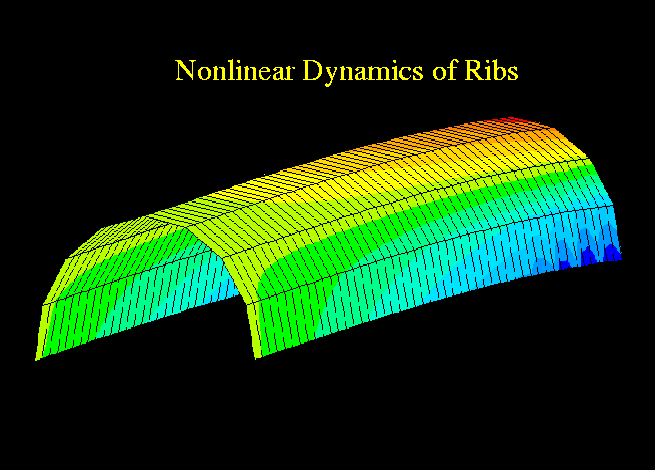 |
Amplitude-response results for the first mode and second mode show softening spring behaviour; consequently, resonance curves bend to the left of the natural frequency.
| First Mode |
Second Mode |
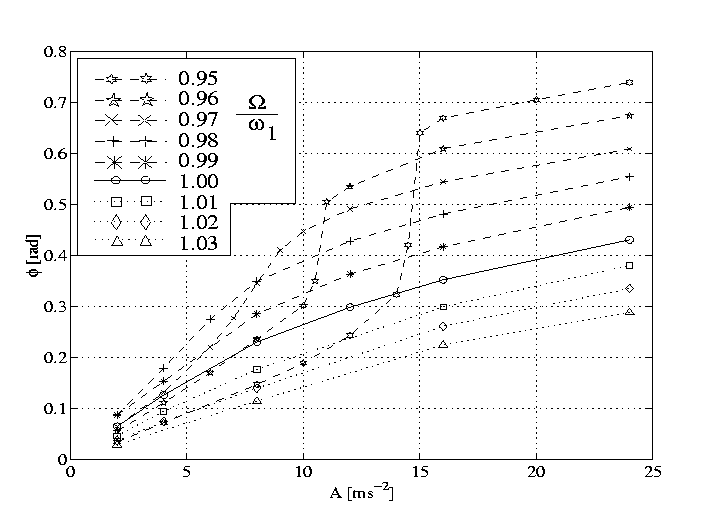 |
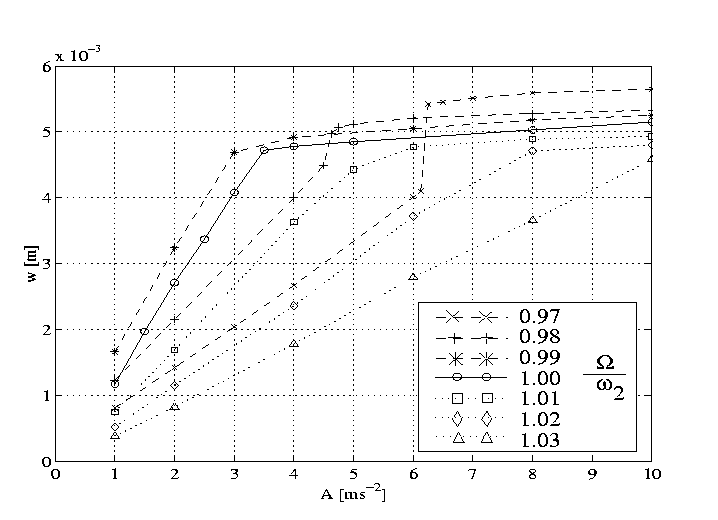 |
Experimental Results
Experimental results have verified the softening behaviour exhibited by the first and second mode. In addition, dominant quadratic nonlinearities cause the rib to exhibit superharmonics, subharmonics, combination resonances, and quasiperiodic motion. Chaotic motion has also been observed.
Frequency-response plots for first and second modes.
| First mode (1st Torsional) |
Second mode (1st Flexural) |
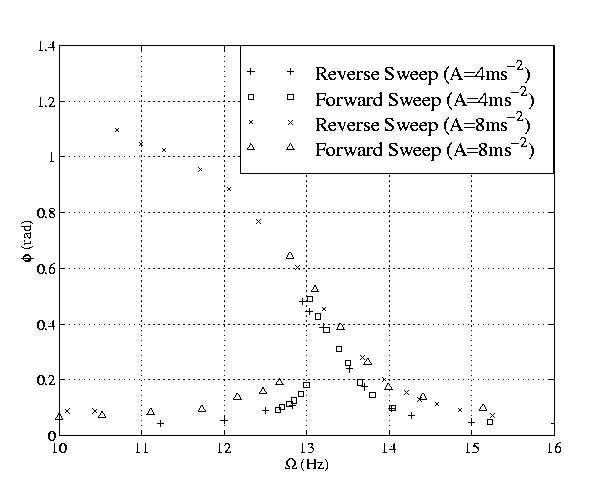 |
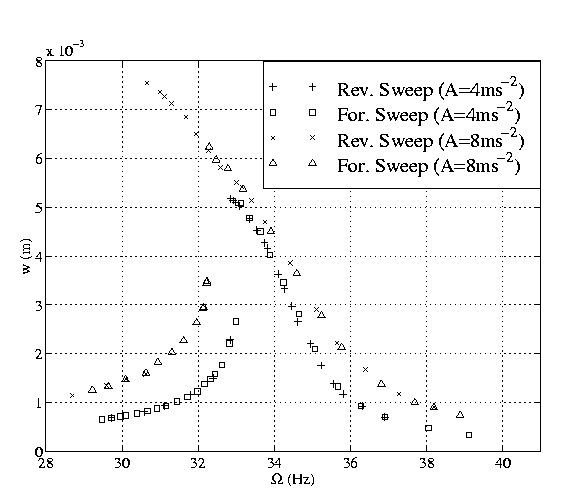 |
Amplitude-response plots for first and second modes.
| First Mode |
Second Mode |
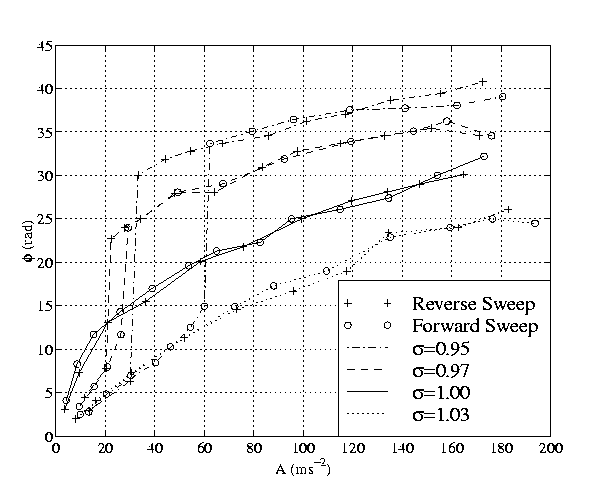 |
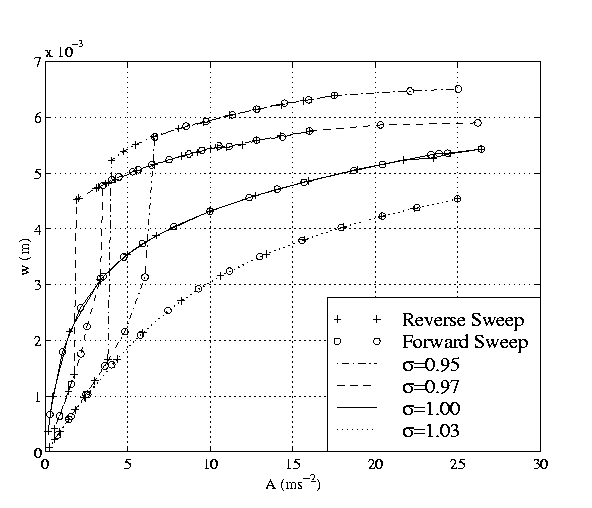 |
[
Cambridge University
| CUED
| Structures Group
| DSL
]
Last updated on the 15th of February, 1998
S.A. King - sak@eng.cam.ac.uk



![[Univ of Cambridge]](http://www.eng.cam.ac.uk/images/house_style/uniban-s.gif)

![[Dept of Engineering]](http://www.eng.cam.ac.uk/images/house_style/engban-s.gif)











